Gynecomastia Or Male Breast Reduction Surgery
Gynecomastia Or Male Breast Reduction Surgery Overview
Gynecomastia Or Male Breast Reduction Surgery is an enlargement or swelling of breast tissue in males. It can affect one or both breasts. Dr. Yatindra Dewangan Is a more experienced plastic surgeon and he has done many Gynecomastia Or Male Breast Reduction Surgeries in the last 12 Years.
Welcomr to our
DrY Cosmetic Plastic Surgery & Hair Transplant Center
Gynecomastia Or Male Breast Reduction Surgery is most commonly caused by an imbalance between the hormones estrogen and testosterone. Estrogen controls female traits, including breast growth. Dr. Yatindra Dewangan Is a more experienced plastic surgeon and he has done many Gynecomastia Or Male Breast Reduction Surgeries in the last 12 Years.
Testosterone controls male traits, such as muscle mass and body hair. Although each of these hormones produces the usual traits seen in males and females, males produce a small amount of estrogen and females produce a small amount of testosterone. Male estrogen levels that are too high or are out of balance with testosterone levels cause gynecomastia.
Gynecomastia occurs naturally at different times in a male’s life. These phases are:
- After birth. Newborn boys are still under the effects of the estrogen they received from their mothers while developing in the womb. More than half of newborn males are born with enlarged breasts. The gynecomastia goes away within two to three weeks after birth.
- At puberty. Hormone levels are changing during puberty (usually 12 to 14 years of age). Breast enlargement usually goes away six months to two years after the start of puberty.
- At mid-life and beyond. Breast enlargement often peaks in men between the ages of 50 and 80. About one in four men in this age range have breast enlargement.
Before & After
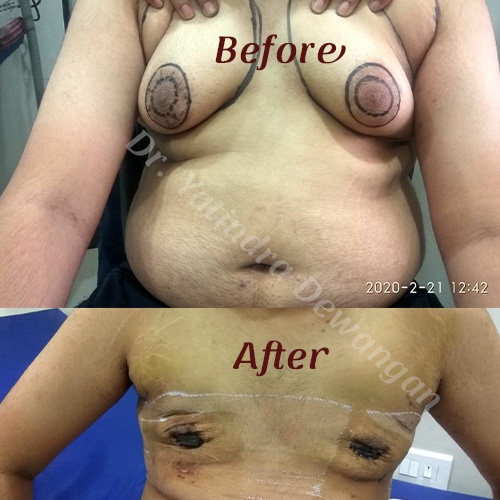
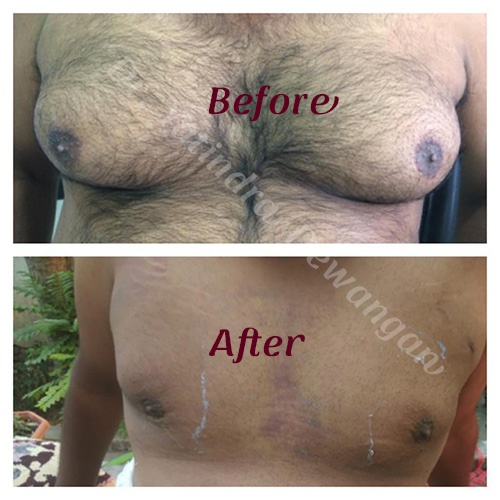
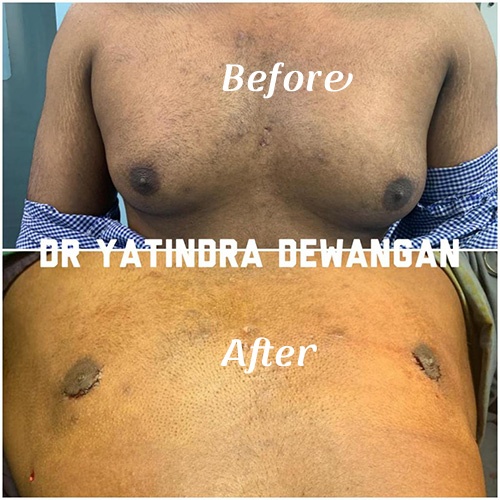
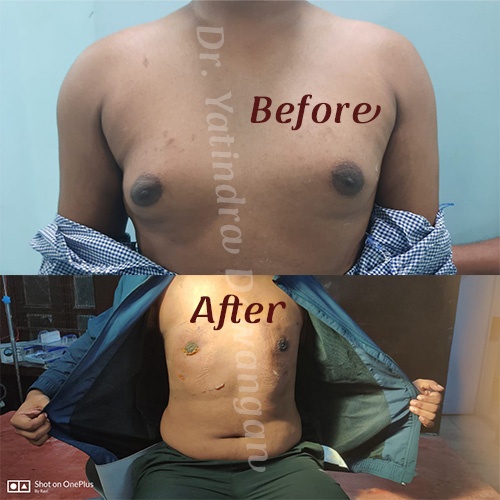
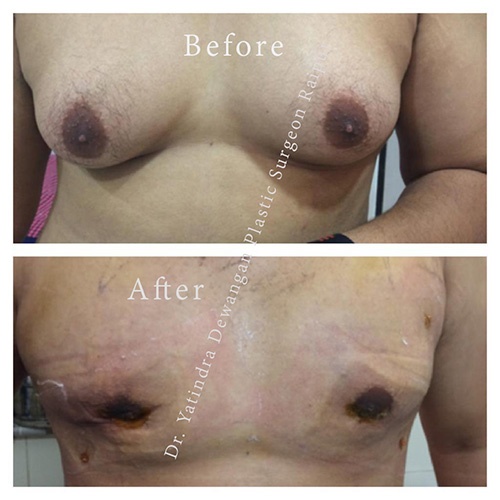
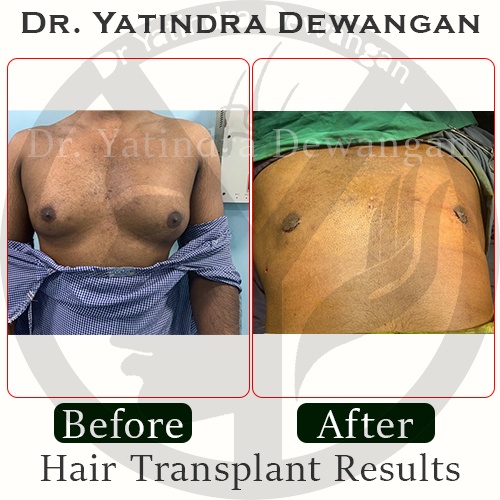
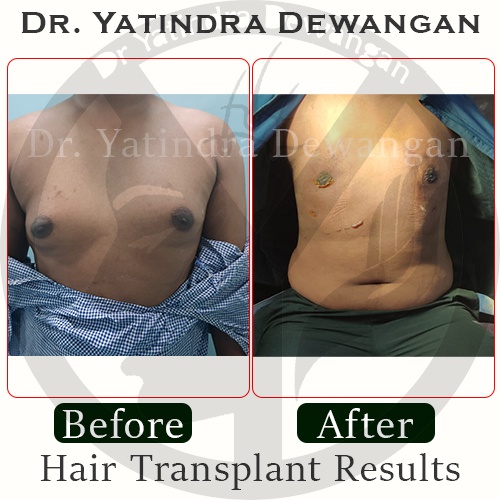
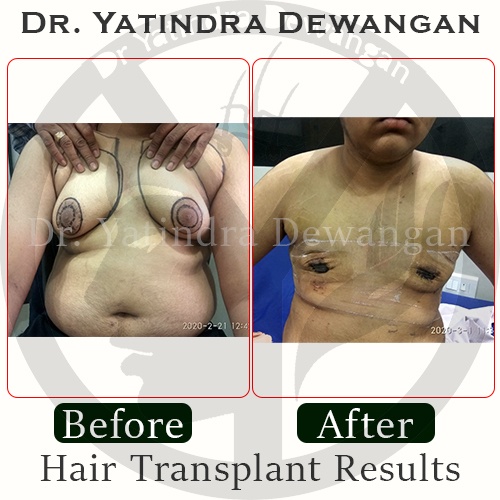
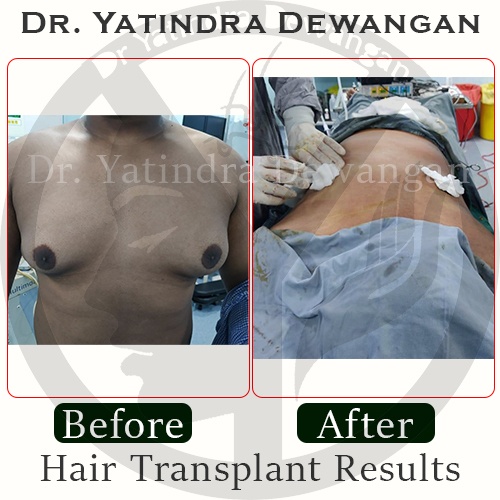
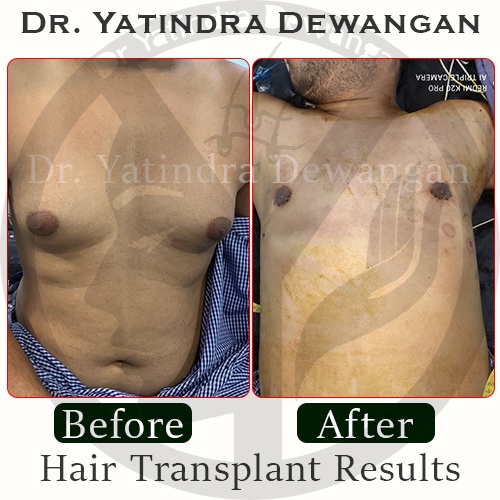
SYMPTOMS AND CAUSES
There are many other conditions that can cause gynecomastia. These include:
- Obesity
- Lack of proper nutrition
- Tumors in the testicles or adrenal glands
- Liver disease
- Hyperthyroidism
- Hypoandrogenism
- Hypogonadism
- Kidney failure
Certain drugs can also cause gynecomastia, including:
- Anabolic steroids for improved athletic performance
- Estrogens
- Finasteride (Proscar®, Propecia®) for enlarged prostate
- Spironolactone (Aldactone®), digoxin (Lanoxin®), amiodarone (Cordarone®), and calcium channel blockers
- Cimetidine (Tagamet®) and proton pump inhibitors for heartburn
- Diazepam (Valium®) for anxiety
- Ketoconazole (Nizoral®) for fungal infections
- Metronidazole (Flagyl®) for bacterial infections
- Human chorionic gonadotropin for fertility problems
- Amphetamines, marijuana, heroin, methadone (“street” drugs) and alcohol
DIAGNOSIS AND TESTS
How is gynecomastia diagnosed?
The diagnosis is based on physical symptoms, breast exam, medical history and medication review, and other exams. Breast pain and tenderness are common symptoms. Often times a firm rubbery disk of tissue, located directly beneath the nipple area, is felt during the exam. The lump is easily moveable within the breast tissue. Your doctor will review all the medications, supplements, and herbal products you take. Your doctor will also review your medical history and order tests to determine if other diseases/conditions are the cause of the gynecomastia. Breast imaging tests — a mammogram and/or breast ultrasound — may be ordered. These tests are usually ordered to rule out breast cancer. Your doctor may also order blood tests to check your hormone levels.
MANAGEMENT AND TREATMENT
What is the treatment for gynecomastia?
Usually, no treatment is needed. Most cases of gynecomastia lessen with time. However, if a medical condition is causing gynecomastia, medications may need to be given. If a medication is the cause, your doctor may tell you to stop taking it or may prescribe a different medication. Your doctor may suggest seeing an endocrinologist (a doctor who specializes in treating hormone-related problems). Surgery is usually not recommended unless the gynecomastia is causing severe pain and tenderness or embarrassment.
Counseling may be recommended for boys and men who find it difficult to cope with this condition. Gynecomastia can be embarrassing and result in avoiding situations in which the chest is bare (changing clothes in the locker room, swimming, public showering). This can lead to not wanting to be around other people, anxiety, stress, and depression. Talking with a counselor can help.
Other conditions that have the same appearance of gynecomastia, but are not gynecomastia include:
Breast Cancer. Men do get breast cancer, but it is uncommon. Usually, breast cancer affects only one breast. The breast is not tender, feels firm-to-hard to the touch, and may contain a lump that feels like it is attached to the breast tissue. Also, lymph nodes in the breast area are enlarged. The skin on the breast area appears dimpled, and there may be leakage of liquid from the nipple.
Fatty breast tissue. This is seen in obese men. It is due to an increase in fat deposits in the breast. (Gynecomastia is a swelling of the glandular tissue of the breast; it is not fat deposits.).
